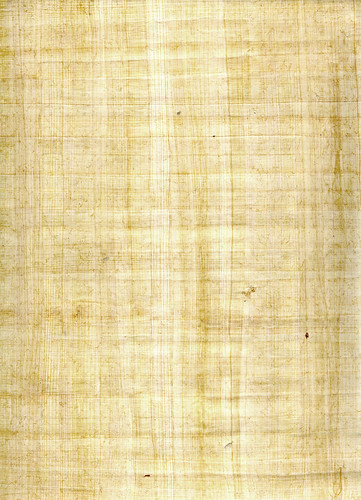If there’s one thing I’ve learned
about this civilizations class, it’s that it’s all about the process. And as
for our ancient artifacts we had to recreate, it was no different. In my group of ancient Greece, we began brainstorming different ideas for the medium we could use. Papyrus was first proposed. Interestingly enough, the word "paper" is etymologically derived from papyros, Ancient Greek for the Cyperus papyrus plant.
 |
| blank papyrus (notice the grains from the reeds) |
 |
| stone tablet with ancient Greek writing |
The
next medium we considered was stone. In ancient Greek culture, inscribing on
stone was used on monuments for more permanent purposes. We quickly realized
that this medium would require a great deal of physical effort in finding the
right stone(s) to use and how to engrave them. Lastly, we came to the idea of a
clay tablet. These were used throughout Minoan and Mycenaean civilizations and
adapted by the mainland Greeks. Clay would be easy enough to find, and easy
enough to engrave on, so we found our medium.
 |
| The famous Phaistos disc, a fired clay tablet found at the temple of Phaistos written in Linear A |
That
night, we all met in the parking lot of the Wilk, and, after finding a ticket
on his windshield, Brett drove us all to Hobby Lobby. Talk about craft central.
The store was crawling with decorations and photo frames and scrapbooking
paper. Thankfully, there was a large selection of clay and we were able to find
a small, grayish block of clay (not unlike the clay tablet we were shown in
Special Collections) along with one that was 3 times its length that will be
used for those translating our artifact.
The
next challenge arose with deciding what we should inscribe. We considered using
Linear B with some kind of accounting list as was popular at the time or some
sample from ancient Greek literature or a famous speech from the classical
period. However, due to the fact that one of you may be translating my group’s
artifact, I will not tell you and leave you in suspense!
As
far as the actual inscribing went, it was fairly easy. We had to wet down the
clay to make it moldable, and because there were grooves in the clay (meant to
be broken apart), the clay started to break apart. After the initial shock, we
realized this could only add authenticity to our artifact as clay is a very
malleable and perishable medium. We all took a turn engraving a line and at the
end, we had our finished product—a very authentic replica of an ancient Greek
clay tablet! But remember, it’s not about the end product, it’s about the
process.
Interesting how you went through a similar process in finding your medium for the project to what ancient civilizations probably went through. You needed something that was time efficient, easy to make, cheap, available and cool looking and you took the proper methods to find it (aka driving the Hobby Lobby).
ReplyDeleteMy group experienced a similar process of finding that process is everything. Becasue we chose to write in stone, we had to choose a message that we could fit, complete in a relatively short amount of time, and that would be the type of message one would find engraved in stone. You can check out my post if you want to see how it went. http://reinventingknowledge7.blogspot.com/2011/11/ogham.html
ReplyDelete